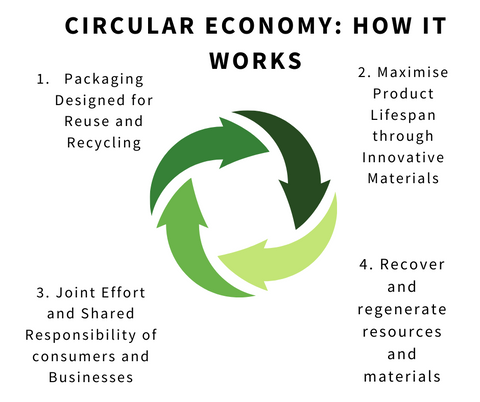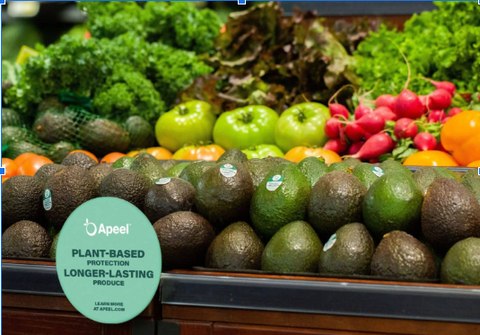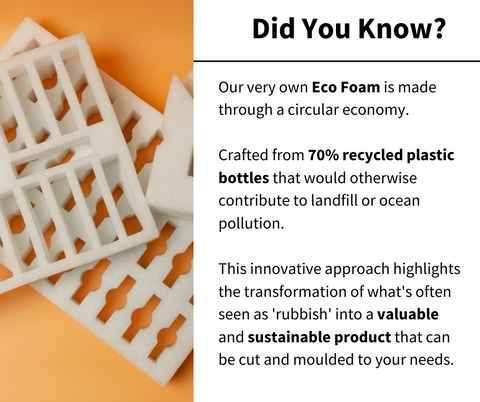Did you know that while 80% of household waste in the UK could potentially be recycled, only around 44.3% actually gets recycled? This means a staggering potentially 55.7% of recyclable materials end up in landfills each year. (England’s household recycling rate falls | MRW)
2023 was the year of buzzwords surrounding sustainability and eco-friendliness - it was everywhere you looked in almost every industry, including the packaging industry and we saw a huge push for Businesses to change their ways.
Designers and manufacturers have made a conscious effort to innovate new materials that do not harm the planet. This has also led to the introduction of what has been termed the ‘circular economy’.
The name circular economy represents how the concept works in a circular motion through collaboration between different people at different touchpoints to minimise waste.

Figure 1. A visual representation of the circular economy model
The concept of a circular economy in the packaging industry is gaining significant attention as a sustainable approach to reducing waste and pollution. Unlike the traditional linear model of ‘take-make-dispose,’ a circular economy focuses on keeping resources in use for as long as possible, extracting the maximum value from them while in use, and then recovering and regenerating products and materials at the end of their service life. The main purpose of a circular economy is to eliminate waste as much as possible from the design stage to the post-use stage.
The Packaging Industry
In the context of packaging, this approach involves designing for longevity, reusability, and recyclability, ensuring that packaging materials circulate within the economy without becoming waste. For instance, Apeel is an innovative company that has developed an edible, plant-based coating for fresh produce, extending its shelf life and reducing the need for plastic packaging, thus illustrating a practical application of circular principles in packaging.
Figure 2. Apeel on avocados to extend their shelf life (Everything you need to know about Apeel - Wicked Leeks (riverford.co.uk)
Another example of a circular economy is Patagonia’s worn-wear programme. The outdoor apparel company has a program called Worn Wear that exemplifies a circular approach to clothing. Through Worn Wear, they:
- Accept used Patagonia garments in any condition.
- Repair worn items whenever possible, extending their lifespan.
- Resell high-quality used Patagonia gear at a discounted price.
- Recycle garments that are beyond repair into new products.
This program keeps Patagonia clothing in use for longer, reduces waste from clothing production and disposal, and offers customers a more sustainable way to enjoy their products.
The urgency to shift towards circular packaging is underscored by the environmental impacts of plastic pollution, with packaging being a significant contributor and a huge topic of interest at the moment. The Ellen MacArthur Foundation highlights that a circular economy not only addresses these environmental concerns but also presents economic and social benefits, such as reducing the volume of plastics entering oceans and cutting greenhouse gas emissions significantly. (https://www.ellenmacarthurfoundation.org/)
Navigating Through Circular Economy Barriers
According to the circularity gap report 2024, global circularity is still in decline despite a huge ‘megatrend’ around the concept. It seems like the concept of circular economy is rising in popularity, yet businesses and industries are falling short of action. (CGR 2024 (circularity-gap.world)
The statistics surrounding this are quite alarming surrounding the global decline of circularity. The report showed that the share of secondary materials consumed by the global economy has decreased from 9.1% in 2018 to 7.2% in 2023; a 21% drop over five years.
Let’s look at some of the factors driving this:
While high-income countries like Germany and Japan grapple with the challenge of high material consumption amidst their advanced waste management systems, less affluent nations face a different set of priorities. For these countries, immediate concerns such as economic development, poverty alleviation, and basic healthcare often take precedence over sustainable packaging initiatives.
The complexity of transitioning to circular packaging, which necessitates a deep integration of sustainability into business models, is a significant undertaking for countries still building their economic and infrastructural foundations. Affluent nations, with their resources and technological prowess, are thus called upon to lead by example.
The looming 2025 plastic reduction commitments underscore the urgency of this transition. However, the path forward requires a collaborative global effort, recognising the varying capacities and priorities of countries at different stages of development. Affluent countries have a critical role in fostering sustainable practices, not only within their borders but also by supporting less affluent nations in navigating their unique challenges towards a more sustainable future.
Next Steps to Consider
As new rules about plastic use and environmental taxes become more common, the circular economy offers great opportunities for both businesses and the environment.
To make the most of these opportunities, companies from different areas need to work together more. By joining forces, we can make a big difference in creating a more sustainable and beneficial future for everyone.
Did You Know?

Figure 3.How Direct Packaging Solution's Eco Foam utilises a circular economy approach
At Direct Packaging Solutions, sustainability is at the heart of what we do. We're committed to minimising waste and actively adapting to the increasing regulations on plastic use. We're dedicated to leading by example with our eco-friendly offerings and inspiring our customers to embrace more sustainable options.
Ready to make your business greener? Reach out to us! We're here to support you in making those impactful, eco-conscious changes, one small step at a time.

